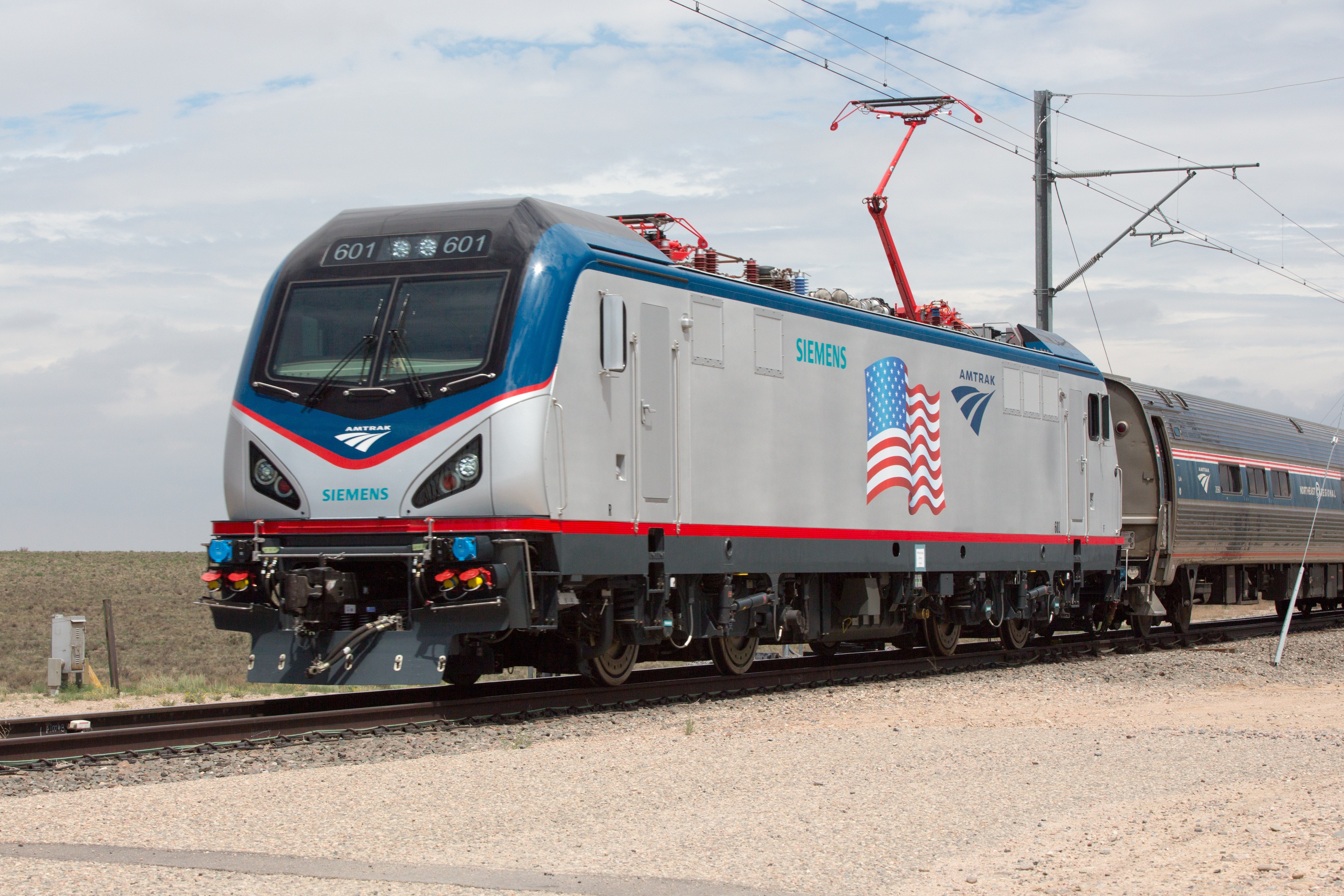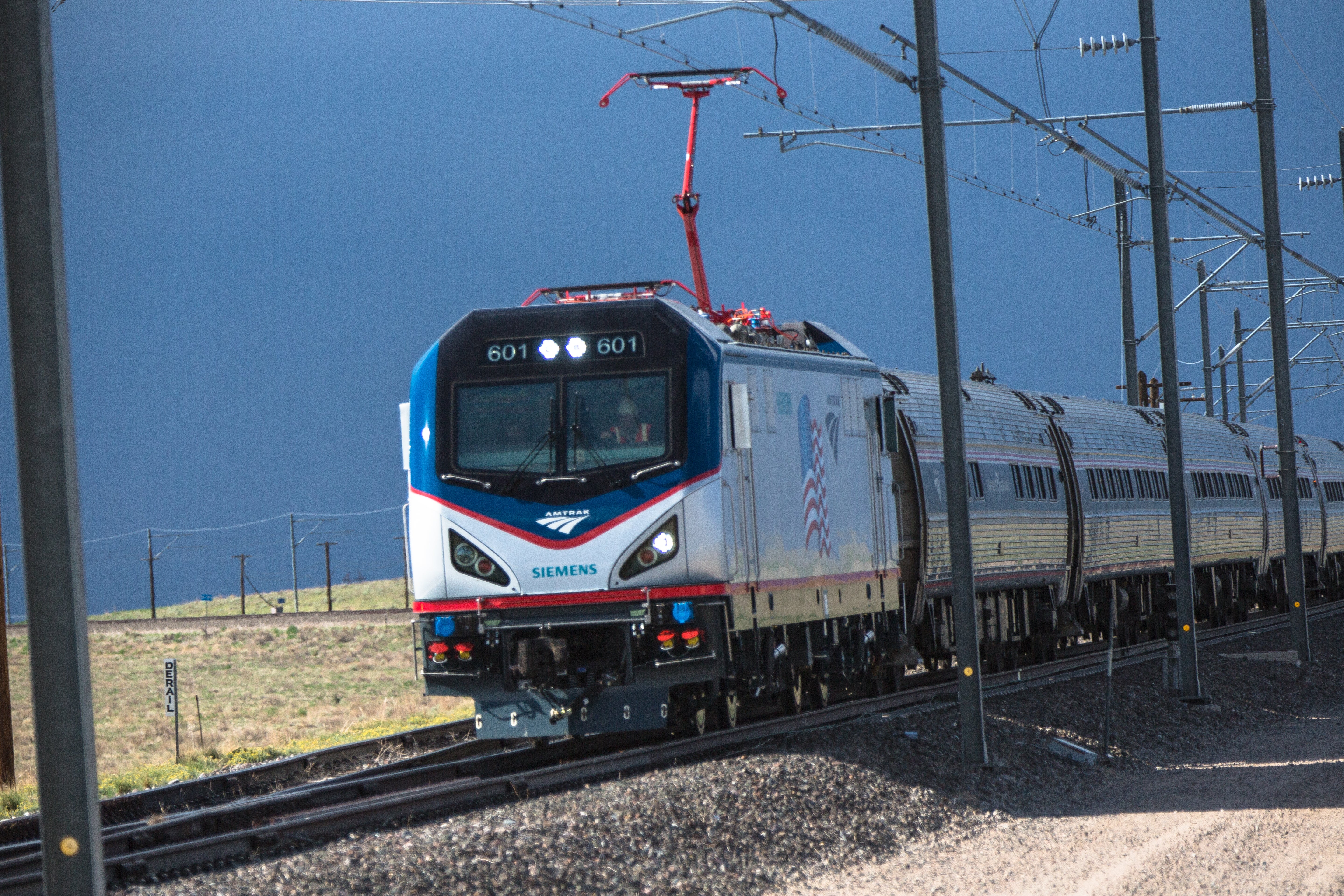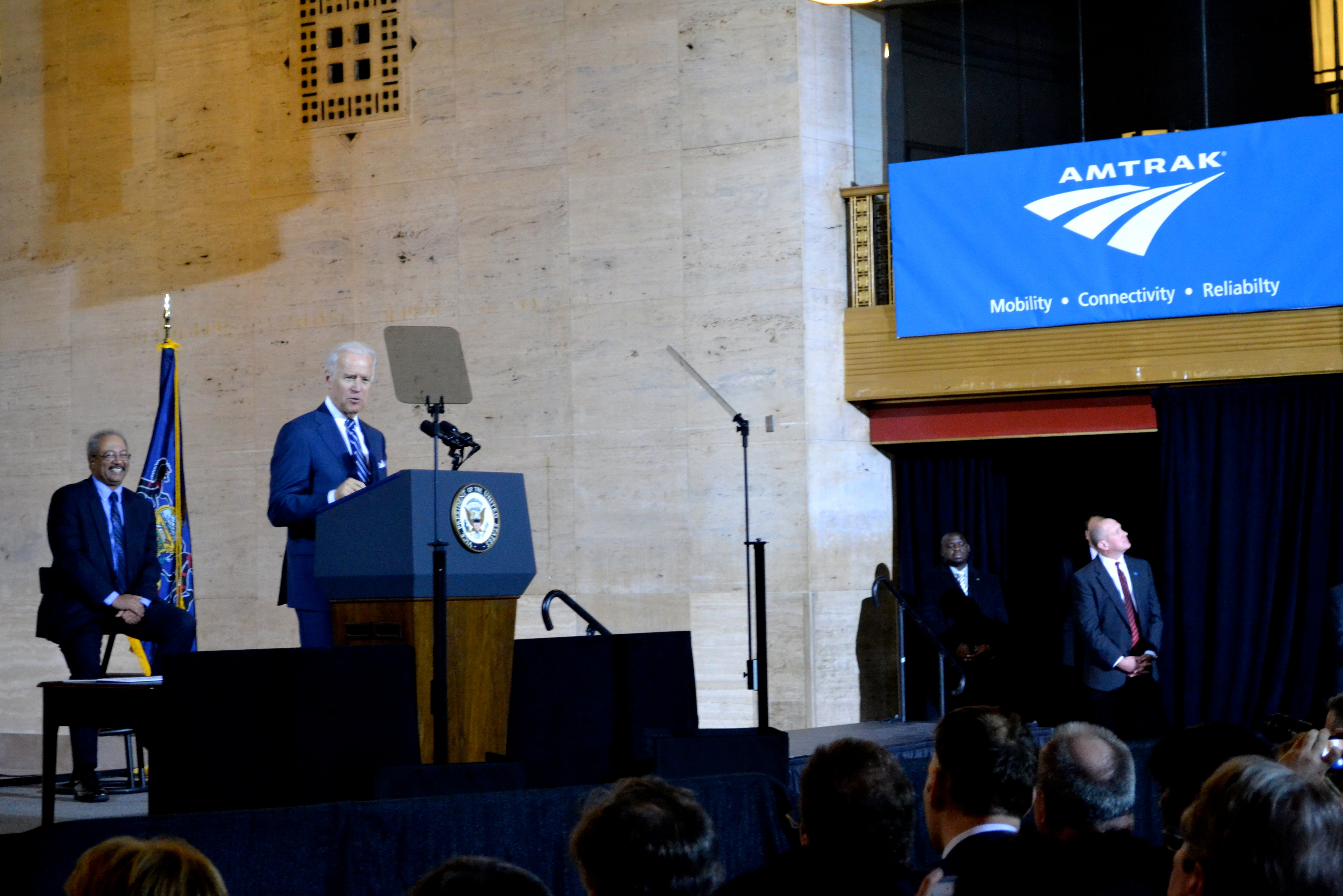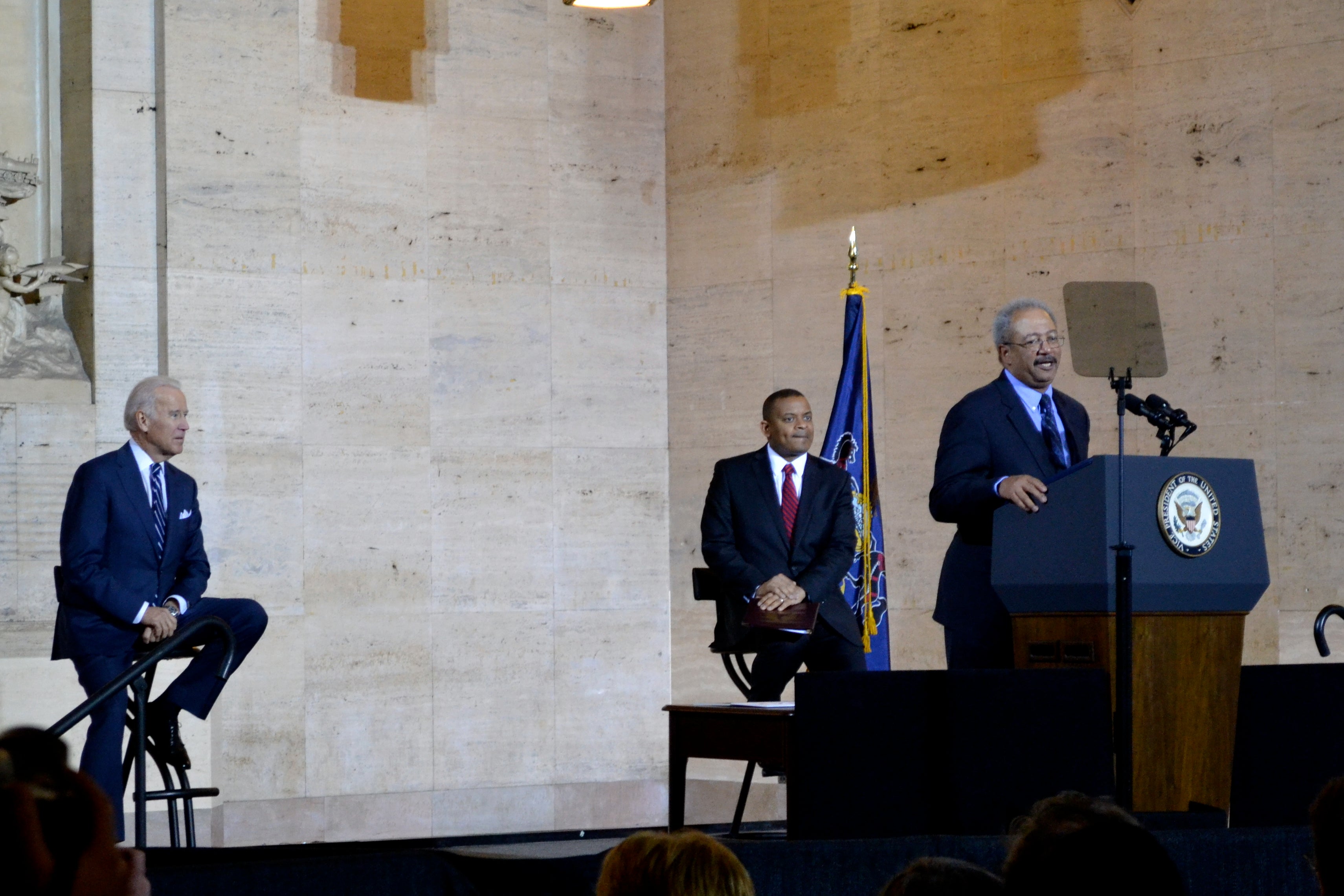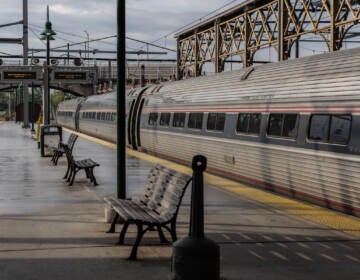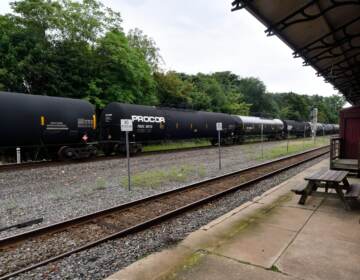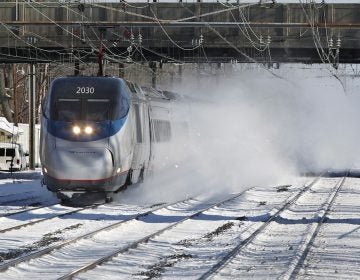Biden lauds Amtrak’s new locomotives, rail investment
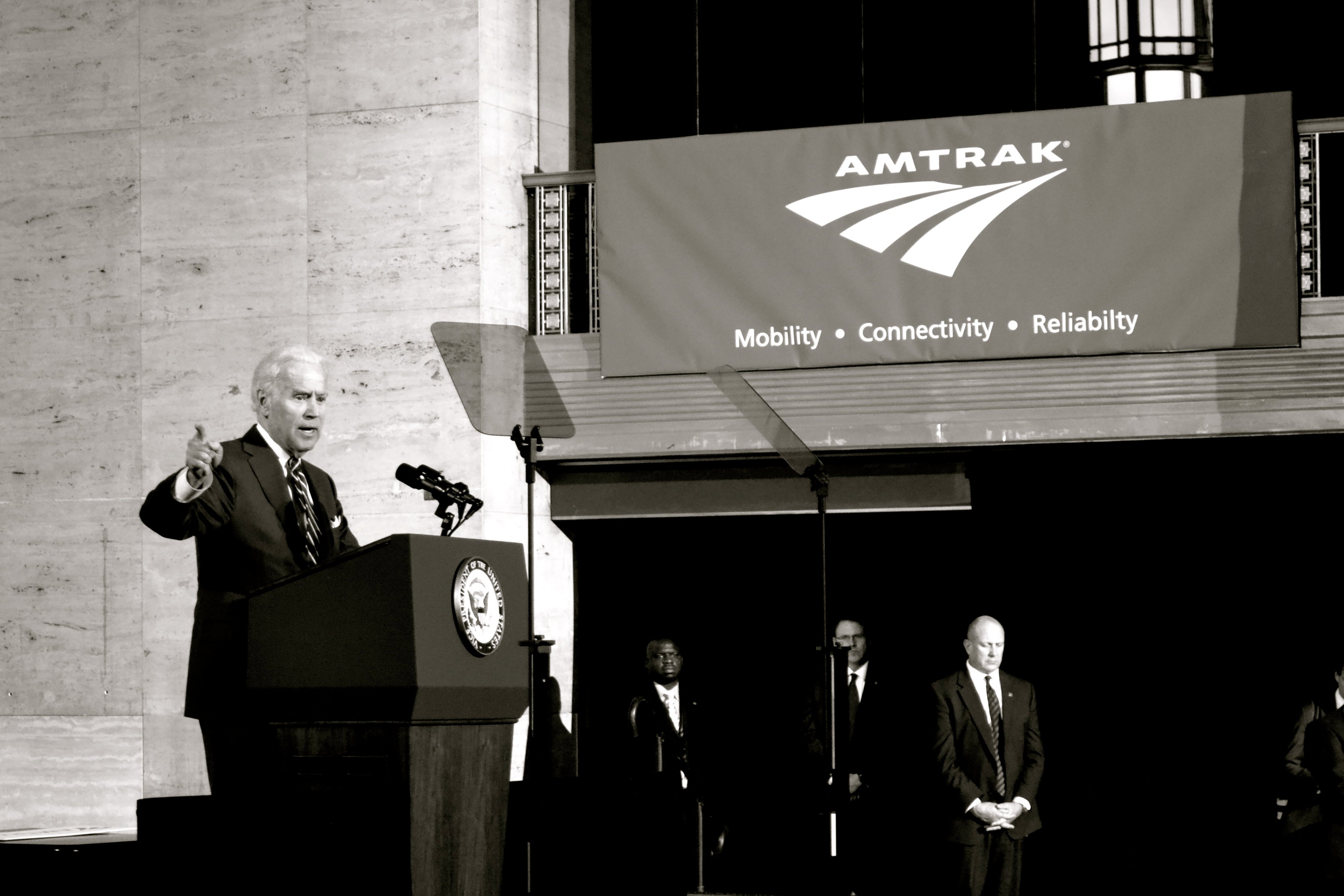
Vice President Joe Biden was in Philadelphia yesterday to catch a glimpse of the first of Amtrak’s new electric locomotives and to speak in support of rail transportation and investment at Amtrak’s 30th Street Station.
The new “Amtrak Cities Sprinter” ACS-64 electric locomotive will enter revenue service today. It is the first in an order of 70 new advanced technology electric locomotives that Amtrak will use to power all Northeast Regional and long-distance trains between Washington, New York and Boston. Eventually, the locomotives will operate on the Keystone Service between New York, Philadelphia and Harrisburg, Pa.
Built by Siemens Rail Systems, the new locomotives will replace those that have been in service for 20 to 35 years and have an average of more than 3.5 million miles. In total, the current fleet has traveled more than 200 million miles.
Capable of reaching 125 miles per hour and pulling up to 18 Amfleet coach cars, the 70 new locomotives are both high-tech and energy efficient. Thanks to regenerative braking technology, the locomotives will redirect 15 percent of their energy usage back into the catenary power supply, saving three billion kilowatt hours of energy, worth more than $3 million over the next 20 years.
Perhaps most significantly, these locomotives are the largest order of electric locomotives to be built in the United States since World War II.
“This locomotive I just went through represents a hell of a lot more than just getting from point A to B,” Biden said after touring the first Amtrak Cities Sprinter at 30th Street Station.
“These trains aren’t just largely made in America,” said Michael Cahill, president of Siemens Rail Systems in the U.S. “They’re made all across America by 69 manufacturers working in 61 cities and 23 states.”
The locomotives’ handrails were made in Philadelphia, and the seats come from Exton, Pa.
“If people are wondering where all the good middle class jobs have gone in this country, tell them to look at that locomotive,” said U.S. Secretary of Transportation Anthony Fox.
“This is about building a better Amtrak, building a better future for the Northeast and the United States,” said Amtrak President and CEO Joe Boardman.
Biden, who has made more than 8,000 roundtrips on Amtrak – enough to circle the globe 70 times, said, “My commitment to Amtrak and passenger rail goes well beyond all those trips I’ve made… Amtrak and passenger rail provide an extremely vital service.”
Biden spoke of the advantages the Northeast corridor has. One in six people in the United States lives in the corridor, he said. One in five jobs in the United States is located here, and six of the top 10 research universities in the world are here.
He also spoke of the corridor’s traffic congestion – The region has 50 percent of the worst bottlenecks in the country, and people spend an average of 47 hours per year stuck in traffic. That represents a loss of $51 billion in economic productivity – and of Amtrak’s potential to help alleviate some of that congestion.
“How many more lanes can you build?” Biden asked. “At what cost?”
“We need to modernize and invest… especially in rail,” he said.
Biden lauded Amtrak and Siemens for producing the locomotives in the United States and for, in the process, creating middle class manufacturing jobs, which Biden said, are necessary for the nation to step forward and lead the world in the 21st Century.
“It’s time to move, and a critical part of moving is infrastructure, and a critical part of infrastructure is rail, and a critical part of rail is Amtrak,” Biden said.
Cahill agreed.
“We are here today because rail has never been more important to the future of America,” he said. “A modern national passenger rail network will help relieve congestion, drive future growth and provide America with safe, reliable energy efficient travel.”
Amtrak expects several more of the new locomotives to enter revenue service in the coming weeks, followed by monthly delivery of the remaining units through 2015.
WHYY is your source for fact-based, in-depth journalism and information. As a nonprofit organization, we rely on financial support from readers like you. Please give today.



